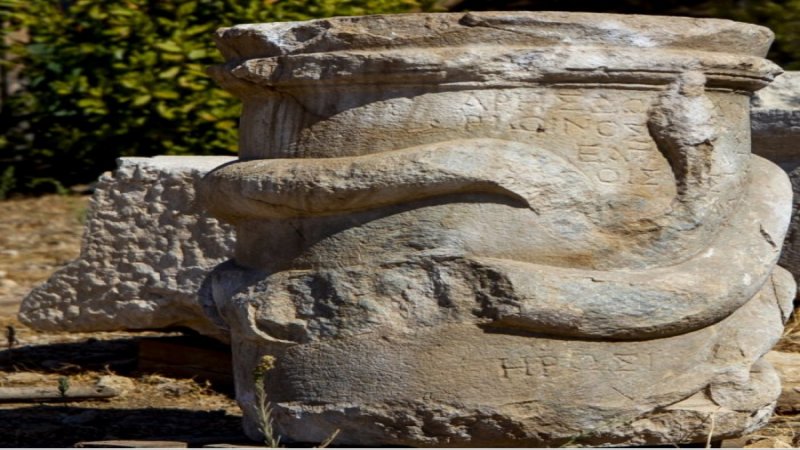Conny Waters – MessageToEagle.com – Patara – one of the six big cities of the Lycia Union – was one of Lycia’s major naval and trading ports, located in the Kaş district of southern Turkey’s Antalya province, at the mouth of the Xanthos River. This ancient Lycian harbor city can be dated back to the 8th century BC.

Excavations at the ancient site of Patara, a city that during the Roman period, was the judicial seat of the Roman governor, and the city became the capital of both the Lycian and Pamphylian provinces at one time. Patara was frequently called “the chosen city” and “the metropolis of the Lycian nation.”
Long-term excavations at the ruins of Patara revealed many secrets of the city. A few years ago, archaeologists worked in the area of the Basilica, the Liman Hamam, the Palestra, the Tepecik Acropolis, and the Ancient Lycia Waterway. The uncovered artifacts included the statuette of the goddess Asteria, the dark Titan goddess of nocturnal oracles, prophecies, the falling stars, and necromancy, the Hermes statue, and a seal once owned by the Egyptian king Ptolemares and his wife Arsinoe and
The Titans were a race of giants who ruled the Earth until overthrown by Zeus and the Olympian gods during the battle of the gods called the Titanomachy. Asteria was the daughter of Coeus and Phoebe from the very first dynasty of Titan gods.
During the recent excavations, archaeologists – who continue to reveal important traces of human life at Patara – found an altar depicting a snake figure in the area adjacent to the Roman bath and walls in Patara. The altar was removed from the area and put in the garden of the excavation’s office to be later displayed at Demre Museum following restoration work, writes Daily Sabah.
The snake-figure altar in the ancient city of Patara, Antalya, southern Turkey. Image credit: AA
Associate professor Mustafa Koçak at the Department of Archaeology of Antalya Bilim University and vice president of the excavation team working in the ancient city told Anadolu Agency (AA) that traditionally altars are large stone objects, usually cylindrical in shape, placed next to tombs in ancient times.
See also:
Patara’s 2,400-Year-Old Ancient Kitchen And ‘Women’s Room’ Unearthed
The discovered alter – believed to be 2,000 years old – is made of marble and adorned with a large snake figure.
“People believed in polytheistic religions at that time. A number of offerings were made on this altar to calm the gods of the underworld. They thought that the snake also represented the gods of the underworld,” Koçak explained.
“They brought liquid or food such as bread and meat and put them on the altar. This is actually an item from the funerary culture of ancient people. Similar altars were also found in some ancient cities in southwestern Muğla province, but we have never encountered such an example in Patara.”
Koçak pointed out that during the excavations they have encountered large, black snakes around the ancient city almost identical to the figure on the altar.
See also: More Archaeology News
“We see these snakes from time to time. They are very harmless animals. When they see people, they run away. The snake on the altar is very similar to the snakes here. We assume that they also saw these snakes here years ago.”
Written by Conny Waters – MessageToEagle.com – AncientPages.com Staff Writer







